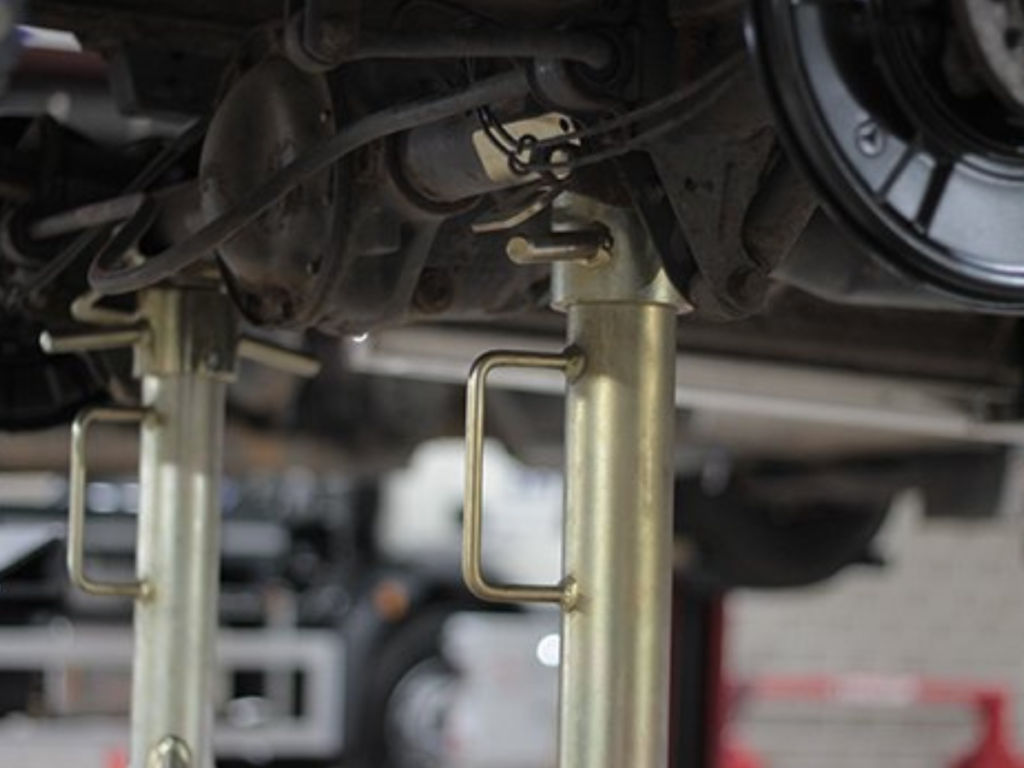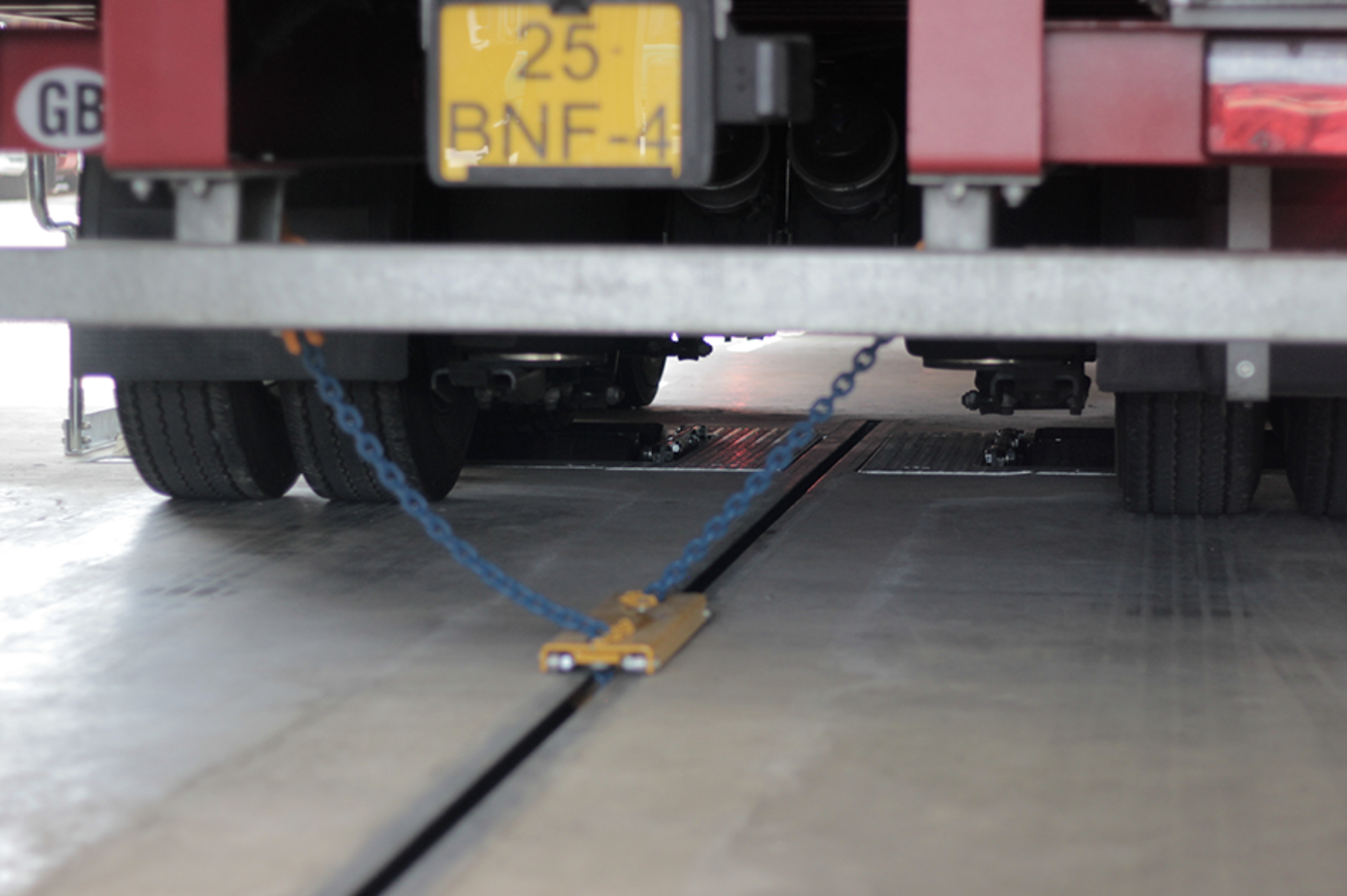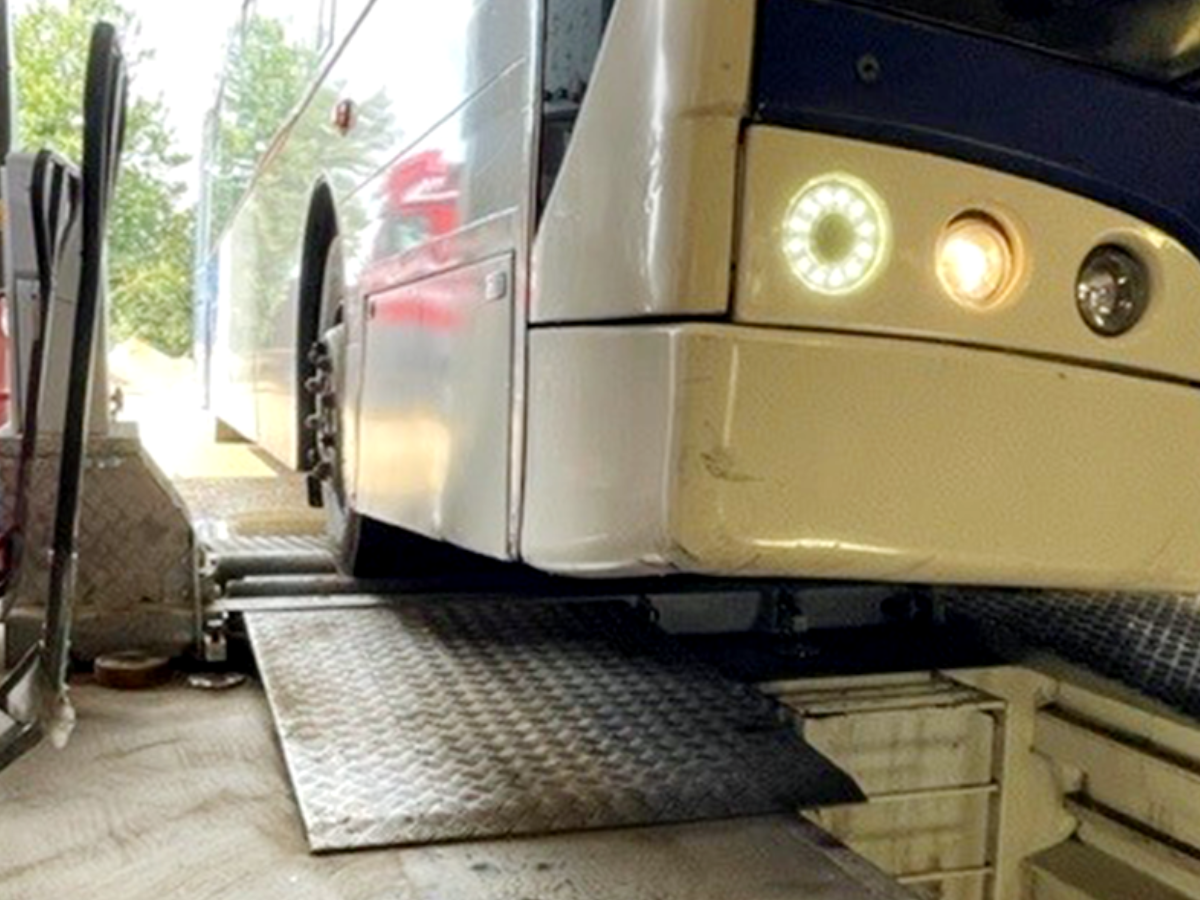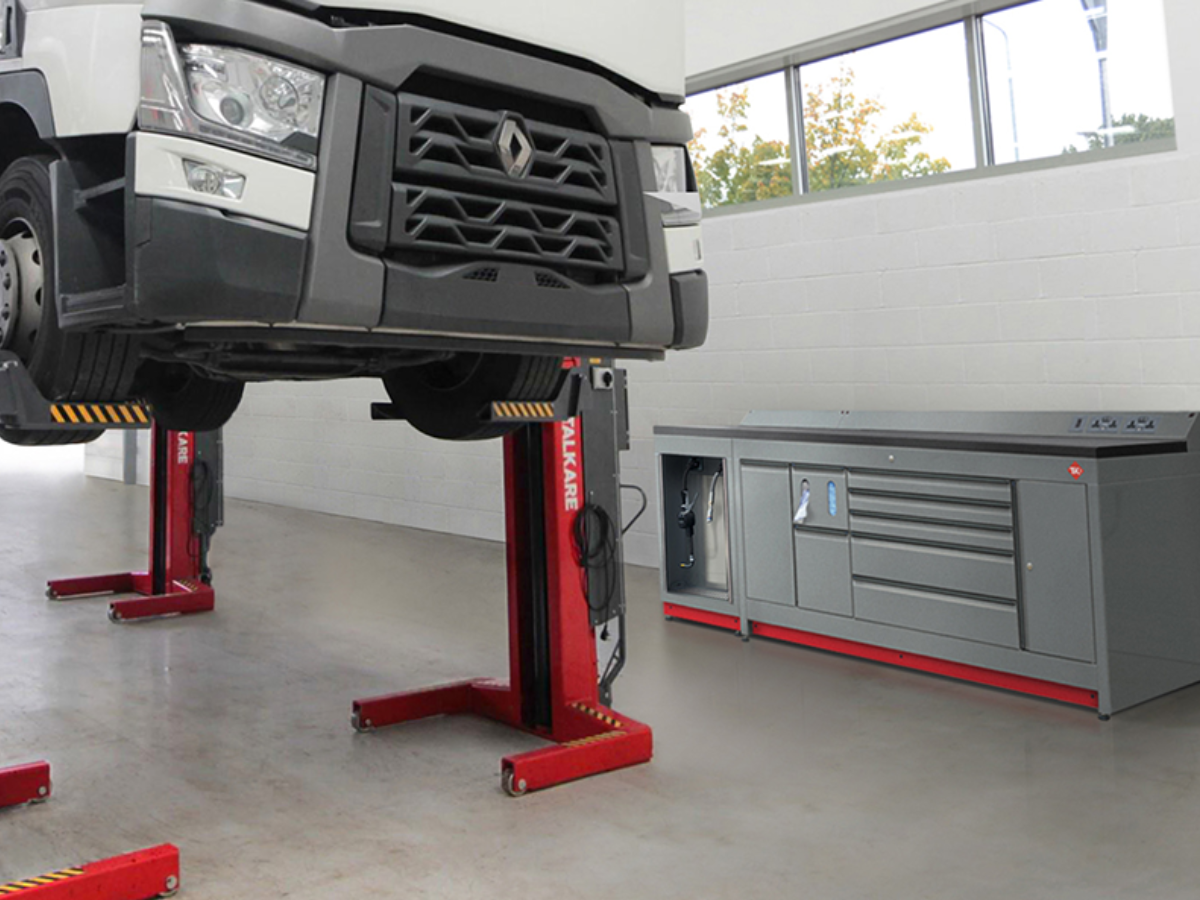In case you hadn’t noticed, we love Mobile Column Lifts.
They’re flexible and customisable – and they’re perfect for smaller workshops where space is at a premium.
But there’s one question we’re always asked about column lifts: what happens when you need to get access to the wheels?
That’s where a Totalkare Support Stand comes in.

By securing a support stand under the chassis of the lifted vehicle, you’re free to remove the relevant column lift and work directly on the vehicle’s wheelbase.
But when you’re dealing with heavy vehicles, you need to be sure you’re doing it right.
Here’s what you need to know about using a support stand.
1. Remember What They’re Built For
For an experienced technician, this one should be obvious. But if you’re training new staff, it won’t always be obvious to them.
A support stand is designed to support part of a vehicle – it’s not designed to do any kind of lifting or lowering.
It’s built to hold static weight at a fixed elevation once it’s locked in place. You can use it as a secondary support alongside a Mobile Column Lift, or as a singular support that lets you safely remove a mobile column lift to give you access to the wheels of the vehicle.
You should never try and use it as a lift or a jack – we’ve got dedicated Bottle Jacks and Trolley Jacks built especially for that purpose.
You should also never turn on the engine – or keep it running – when you’re using a support stand or a mobile column lift. They’re designed to be safe under a specific set of conditions, and the vibrations and potential movement of parts could cause the raised vehicle to become unstable.
2. Check Your Support Stand Before You Start
A support stand might look simple – but it’s a heavy-duty piece of kit that’s built to withstand incredible forces.
And that means you need to give it the same safety checks as a vehicle lift. Before you do anything else with your support stand, you’ll need to:
- Check the support stand for any signs of damage or distortion
- Inspect each weld on the joints of the support stand
- Check the wheels for any signs of damage
- Make sure the screw thread is working properly and isn’t damaged
- Inspect the top section channel (the U-shape that makes contact with the vehicle)
- And make sure the Safe Working Load written on the stand is appropriate for the vehicle
3. Always Use the Manufacturer’s Support Point
Support stands are built to take some serious weight. But that doesn’t mean you can use them anywhere.
Different vehicles will have different designated support points, and you should always refer to the vehicle’s manual, or get a confirmation from the manufacturers themselves.
These support points exist to help you avoid damage to the vehicle – so you’re not putting excessive force on a component that can’t handle it.
But it’s also a critical safety measure, both for you and the teams around you.
If you use a support stand in the wrong place, it could upset the balance of the vehicle while it’s raised – and we don’t need to tell you how dangerous that could be!
In most cases, it’s likely that the manufacturer’s support point will be somewhere near the wheel, and somewhere closer to the outside of the vehicle – to keep the right level of balance against the other mobile column lifts attached to the other wheels.
4. Double-Check the Point of Contact
Once you’ve found the correct support point and you’ve got the stand in position, you’re ready to start adjusting the stand to raise the top channel up to the vehicle’s support point.
You’ll want to rotate the top channel so it’s parallel to the lifting point, so the U-shape forms a cup that safely grips the part of the vehicle that’s making contact.
But you’ll also need to check the point of contact before you fully commit to supporting the vehicle – making sure there aren’t any wires, cables, or pipes that could get trapped by the top channel and suffer damage from the weight of the vehicle.
5. Stand Clear and Watch Carefully
With the support stand firmly in place under the correct support point, the vehicle should now have the extra support it needs.
But if you’re using a support stand to gain access to the wheelbase, there are a few important steps left.
Before you do anything with the mobile column lift, get out from under the vehicle and stand on the outside of the column lift – with plenty of clear space between you and the raised vehicle.
Find a spot where you can both safely operate the column lift, and also keep full visibility over the support stand.
Choose the mode on the lift that ensures you’re only lowering the column that’s being supported, and start slowly lowering that column – all the while watching carefully to ensure that the support stand stays in position and doesn’t move.
Once the arms of the column lift are clear of the wheel (and you’re satisfied that the support stand is safely supporting the vehicle), you can move the mobile column lift away from the vehicle and gain access to the wheelbase.
Looking for a Safer Way to Work on Wheels?
If you’re running a workshop that exclusively uses Mobile Column Lifts, you’ll need a way of gaining access to your vehicle’s wheels.
And a strong set of high-quality support stands is one of the safest (and most cost-effective) ways to do it.
So if you’re looking for a low-cost investment to help your teams be more productive when they’re lifting, take a look at our short and long Support Stands in our online shop – or talk to a Totalkare expert to find out more.
This article was originally published by Totalkare Ltd.














